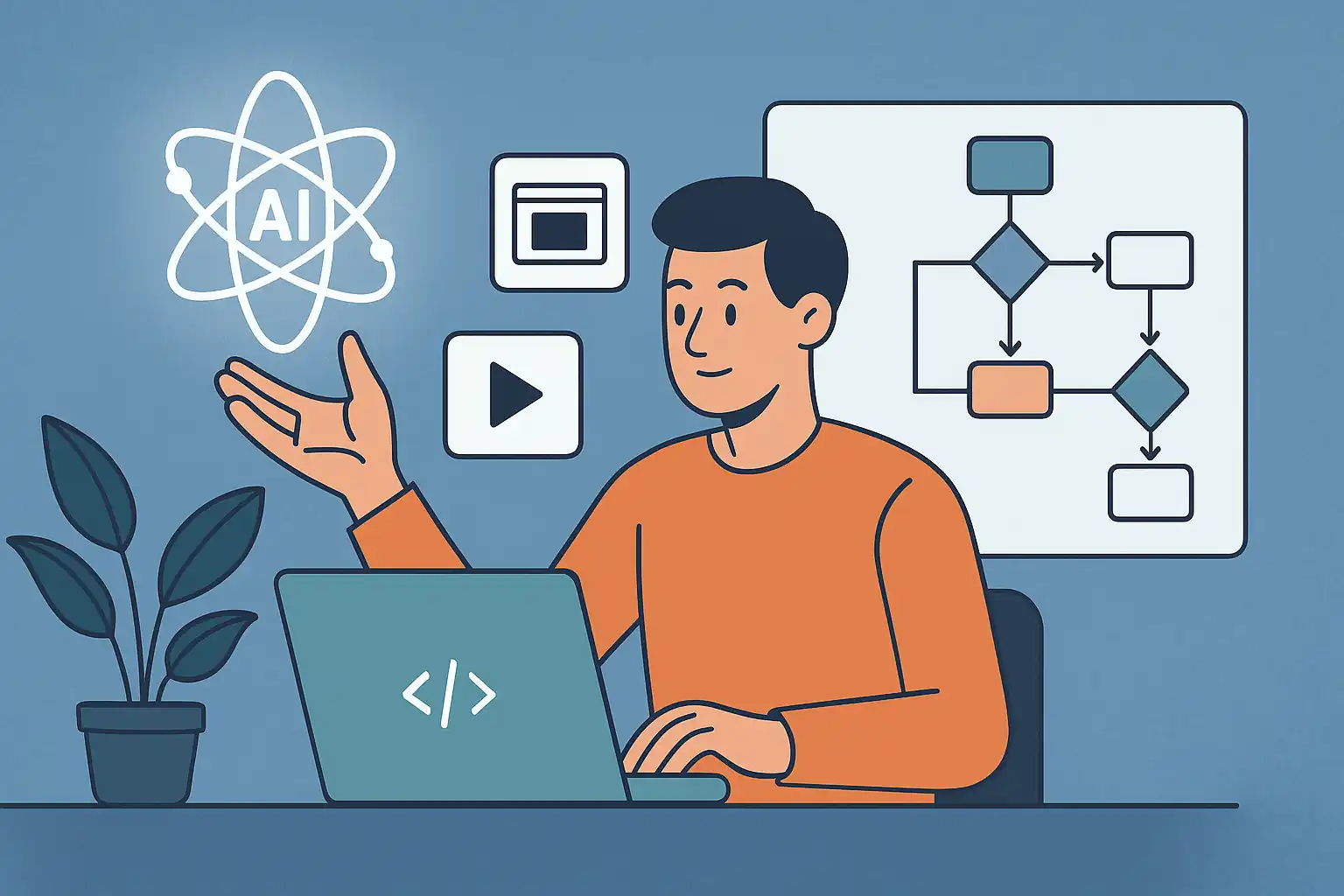
In today’s landscape, “AI-ready” is becoming an expectation,especially for startups shipping MVPs. Many assume this means hiring data scientists or integrating models immediately. In practice, AI-readiness is mostly about how you structure code, handle data, and prepare for future intelligence,even if you don’t use AI on day one.
What does “AI-ready” actually mean?
It means your app is modular, flexible, and data-aware enough to connect to intelligent services when needed. By following solid architecture principles now, you avoid expensive rewrites when it’s time to add recommendations, chatbots, analytics, or automation.
Start with a modular backend
Separate responsibilities clearly,especially server-side. A service-based or modular architecture lets you introduce AI endpoints without disturbing core logic. Keep user management, analytics, and recommendation logic isolated so you can call third-party AI APIs or swap implementations later.
Capture clean, structured data from day one
Data discipline is the heart of AI-readiness. Log meaningful events,clicks, sessions, form inputs, support actions,in a consistent, queryable format. When structured telemetry already exists, you can power models and analytics without retroactive cleanup.
Design a flexible frontend
On the UI side, prefer reusable components that can render personalized results and dynamic content. Avoid tightly hard-coded layouts. In React Native and web, this makes it easy to surface AI-driven recommendations or insights as the product evolves.
Think ethically: consent and governance
Plan for consent, transparency, and compliance early. Use privacy-first defaults and clear opt-ins. Ethical data practices protect users today and prevent legal friction when you later introduce intelligent features or behavioral tracking.
A real-world example from MERN / React Native
On a recent MERN + React Native project, we added an analytics layer at MVP stage even without AI features. Six months later the client requested behavior-based recommendations. Because events were already captured cleanly and services were modular, we plugged in an AI endpoint and updated the UI within days.
How ChatGPT, Claude, and Gemini slot into your architecture
Once the foundations are in place, you can introduce different assistants without ripping up code. Use each platform where it generates the most leverage.
| Assistant | Ideal responsibilities | Dependencies to prepare |
|---|---|---|
| ChatGPT | Conversational UX, guided flows, support knowledge bases, internal copilots. | Structured intents, clean product docs, API endpoints that can be triggered safely. |
| Claude | Regulated knowledge assistants, policy generation, explainable workflows. | Tagged knowledge repositories, audit trails, consent tracking. |
| Gemini | Multimodal search, marketing experiments, growth automations. | Media pipelines, analytics instrumentation, marketing automation hooks. |
If you plan to layer AI into customer conversations, keep telephony and messaging workloads modular too—our Twilio contact center services plug into the same event streams so human agents, bots, and analytics stay coordinated.
Final thoughts: build smart now, scale intelligently later
AI-ready doesn’t mean implementing models today. It means choosing architecture and data practices that make tomorrow’s intelligence easy. With modular services, clean telemetry, adaptable UI, and privacy-first design, your product can evolve with user and investor expectations,without costly rewrites.
You don’t need to be an AI specialist to get this right,just adopt the mindset that AI is a natural evolution of your product, not a bolt-on.
Need a partner for your AI-ready roadmap?
Digital Sensei Technologies helps teams design the architecture, data foundations, and automation layers that make AI adoption seamless. Explore our dedicated service lines:
